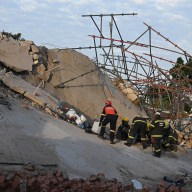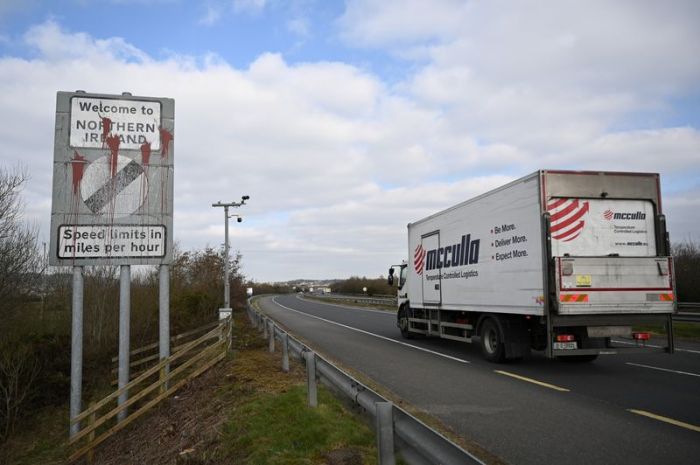NEW YORK (Reuters) – A surge in Delta variant infections sparked a broad sell-off on Wall Street on Monday as investors feared renewed COVID-19 shutdowns and a protracted economic recovery.
All three major U.S. stock indexes ended the session sharply lower, with the S&P and the Nasdaq suffering their largest one-day percentage drop since mid-May.
The blue-chip Dow had its worst day in nearly nine months.
The risk-off sentiment also sent U.S. 10-year Treasury yields sliding, pulling rate sensitive banks stock prices with them. The S&P 500 Banks index dropped 3.3%.
“Much of it is related to the Delta (variant),” said Paul Nolte, portfolio manager at Kingsview Asset Management in Chicago. “There’s some concern too that maybe the economy is not going to open up as quickly as everyone thinks, and the big boom that everyone’s expecting is going to be more of a pop than a boom.”
The highly contagious COVID-19 Delta variant, now the dominant strain across the globe, has caused a surge in new infections and deaths, nearly exclusively among unvaccinated people.
For an interactive graphic on worldwide vaccine deployment and availability, click here.
“Global availability of the vaccine has been an issue from day one.” Nolte said. “That’s been out there for a long time. This is the latest iteration of that. We still have a long way to go.”
Travel and leisure stocks plunged, with the S&P 1500 Airline index shedding 3.8% and the S&P 1500 Hotel and Restaurant index off 2.7%.
The CBOE Volatility index, a gauge of investor anxiety, gained 4.1 points to 22.50, its highest closing level in two months.
The Dow Jones Industrial Average fell 725.81 points, or 2.09%, to 33,962.04, the S&P 500 lost 68.67 points, or 1.59%, to 4,258.49 and the Nasdaq Composite dropped 152.25 points, or 1.06%, to 14,274.98.
Graphic: S&P 500 drops from record high as new coronavirus cases climb: https://fingfx.thomsonreuters.com/gfx/mkt/xlbpgqqxwpq/Pasted%20image%201626703807725.png
All 11 major sectors in the S&P 500 closed deep in negative territory. Energy shares, weighed down by plunging crude prices, fell 3.6%, their worst day since March.
Second-quarter earnings reporting season is under way, with 41 of the companies in the S&P 500 having reported. Of those, 90% have beaten consensus estimates, according to Refinitiv.
Among high-profile names, Netflix, Twitter, Johnson & Johnson, United Airlines and Intel, along with a host of industrials from Honeywell to Harley-Davidson are due to post results this week.
Analysts now see year-on-year S&P 500 earnings growth of 72% for the April to June period, substantially higher than the 54% annual growth forecast at the beginning of the quarter, per Refinitiv.
International Business Machines Corp beat quarterly revenue estimates based on the strength of its cloud computing segment. Its shares were up over 3% in after-hours trading.
Zoom Video Communications Inc announced a $14.7 billion all-stock deal to buy cloud-based call center operator Five9 Inc. The teleconferencing services provider’s shares dropped 2.1%, while Five9’s jumped 5.9%.
Declining issues outnumbered advancing ones on the NYSE by a 5.21-to-1 ratio; on Nasdaq, a 2.52-to-1 ratio favored decliners.
The S&P 500 posted 12 new 52-week highs and no new lows; the Nasdaq Composite recorded 21 new highs and 252 new lows.
Volume on U.S. exchanges was 12.02 billion shares, compared with the 10.17 billion average over the last 20 trading days.
(Reporting by Stephen Culp; Additional reporting by Devik Jain in Bengaluru; Editing by Cynthia Osterman)



















